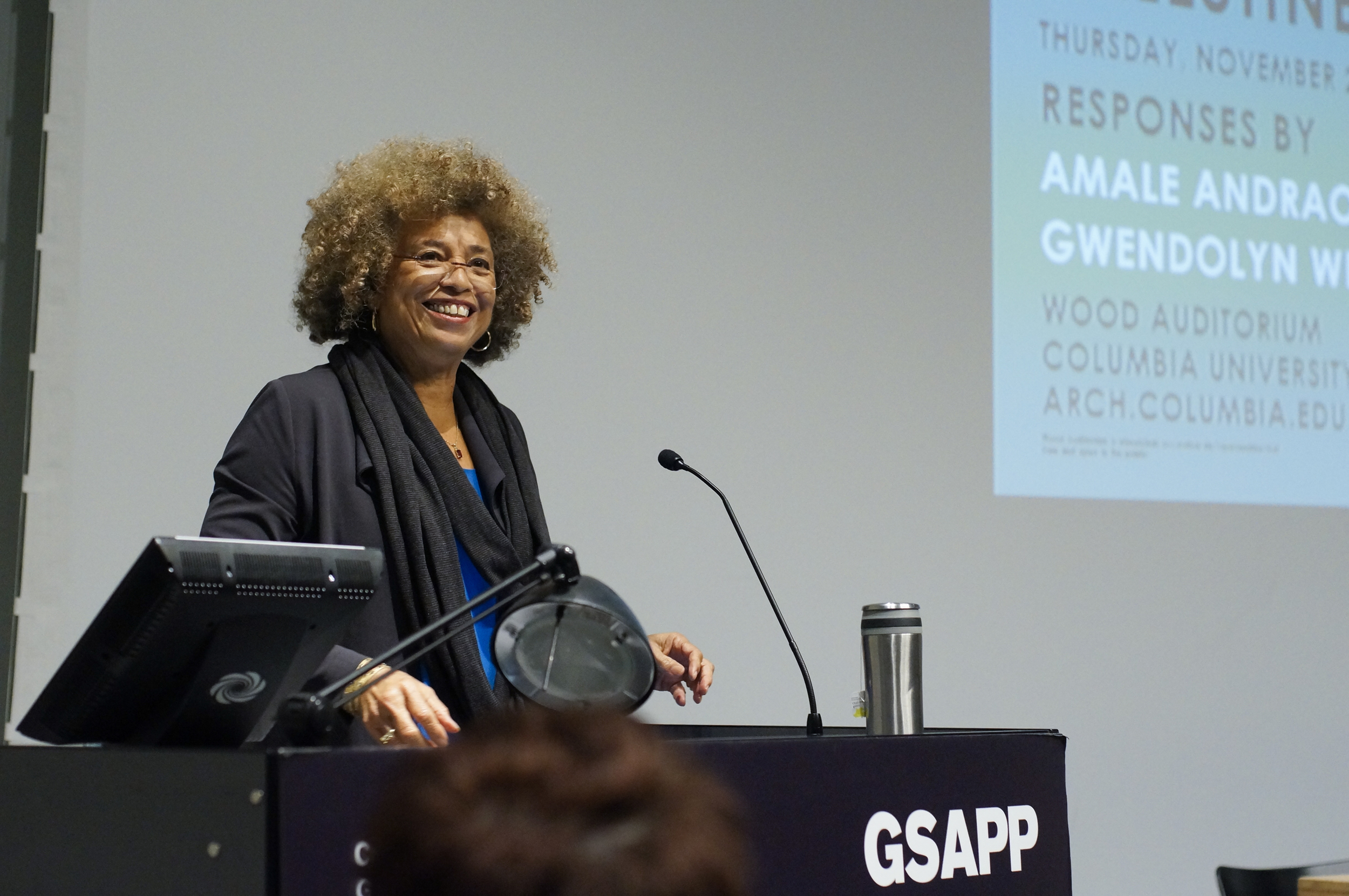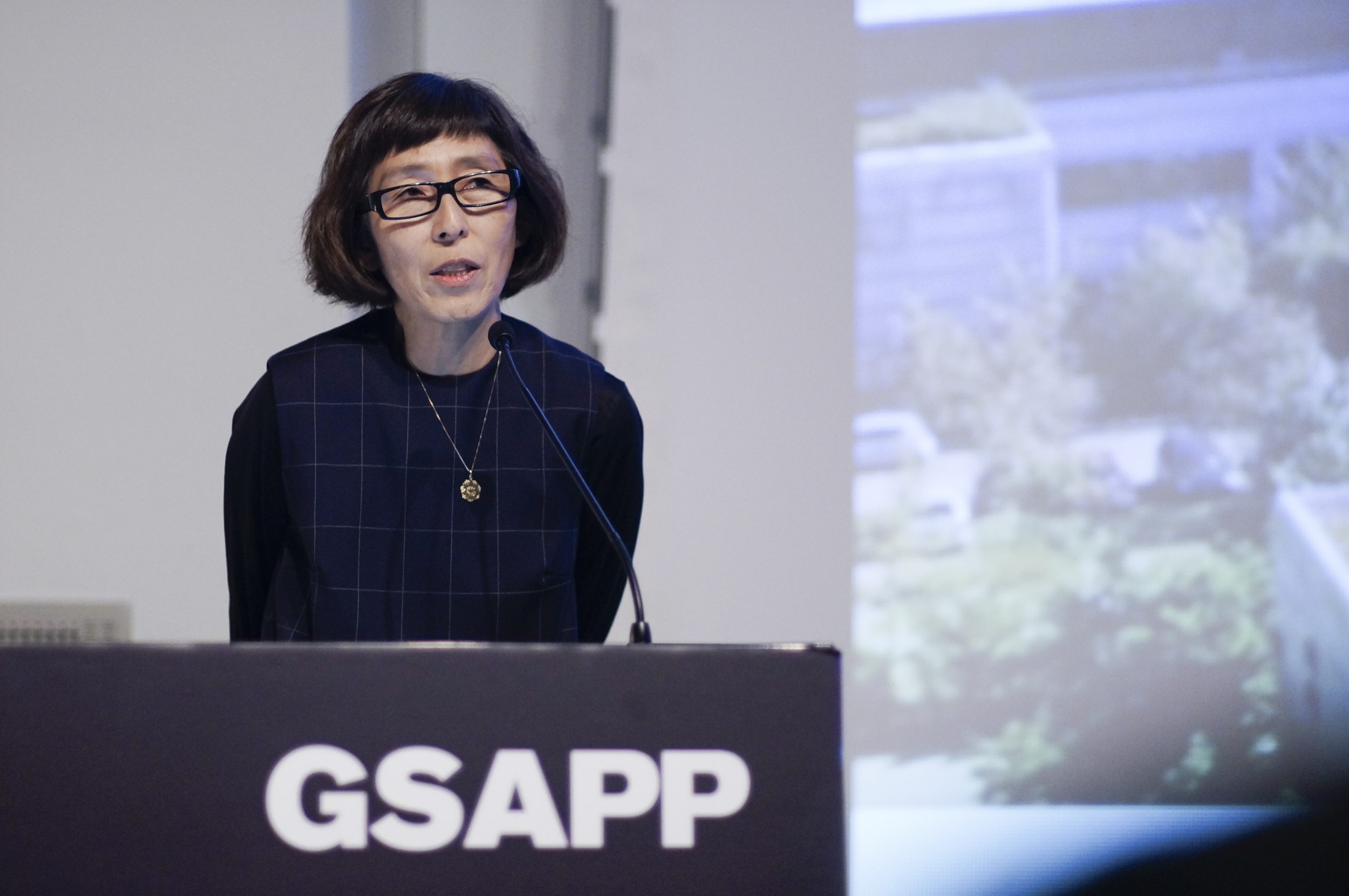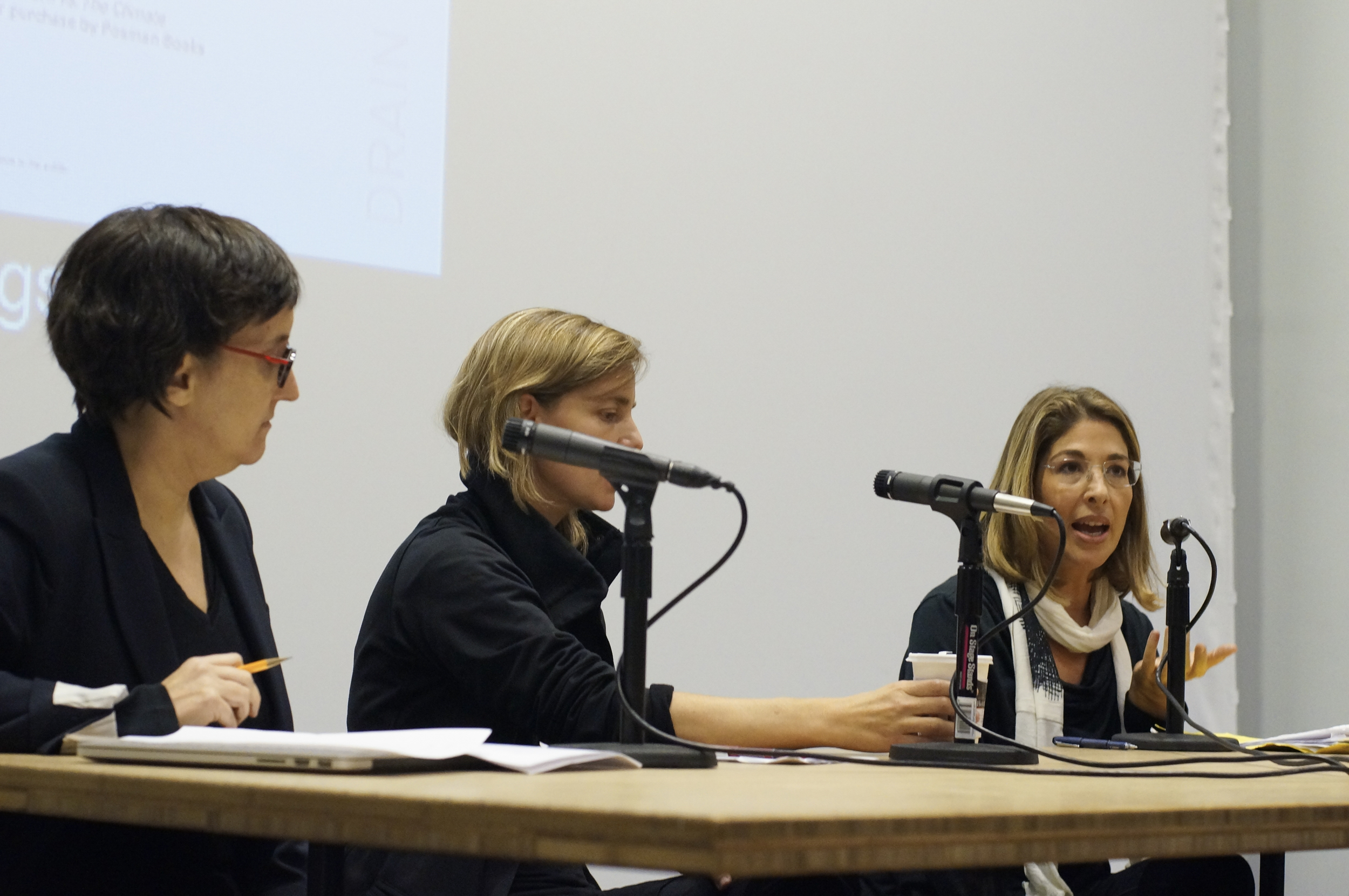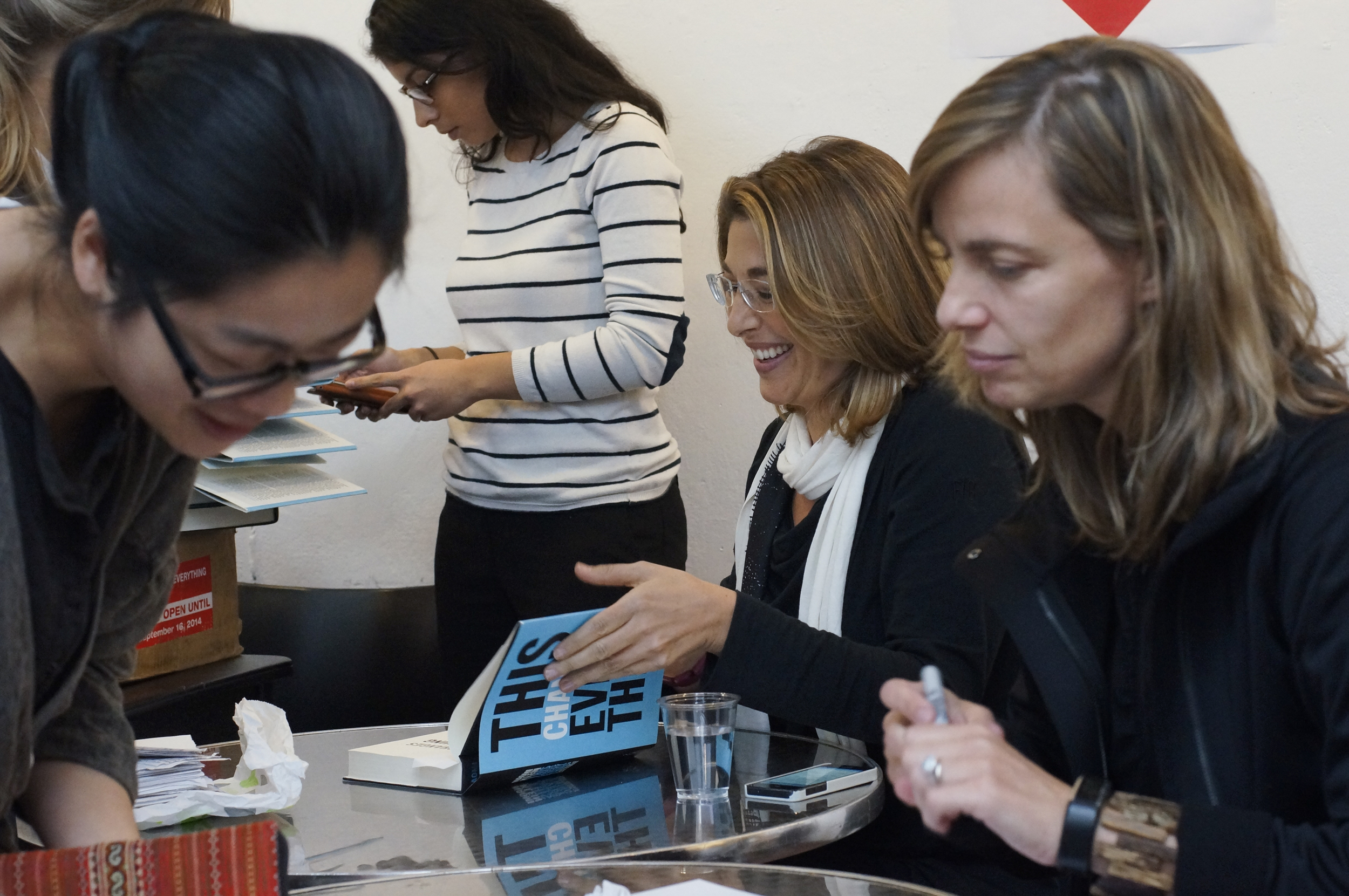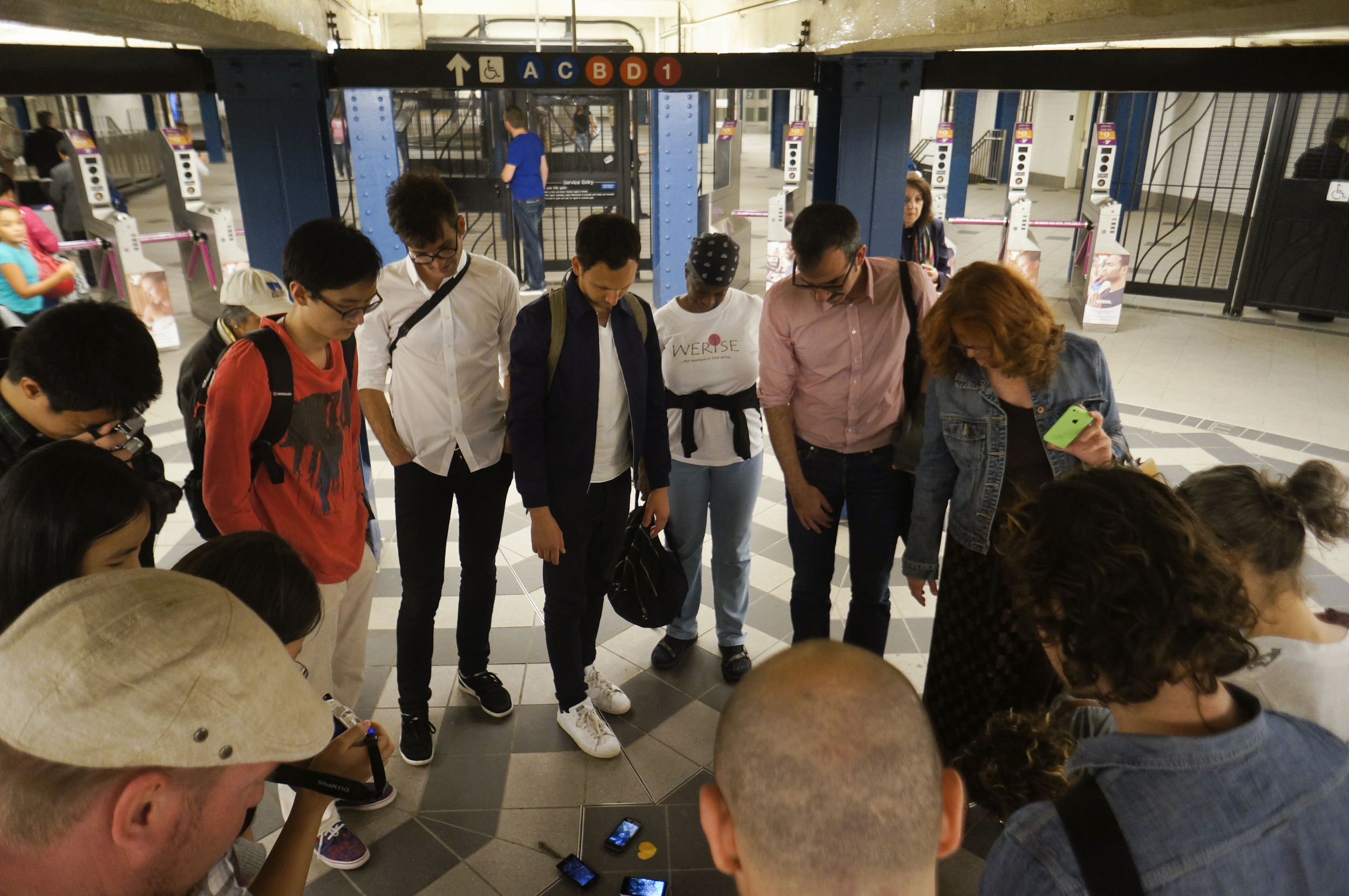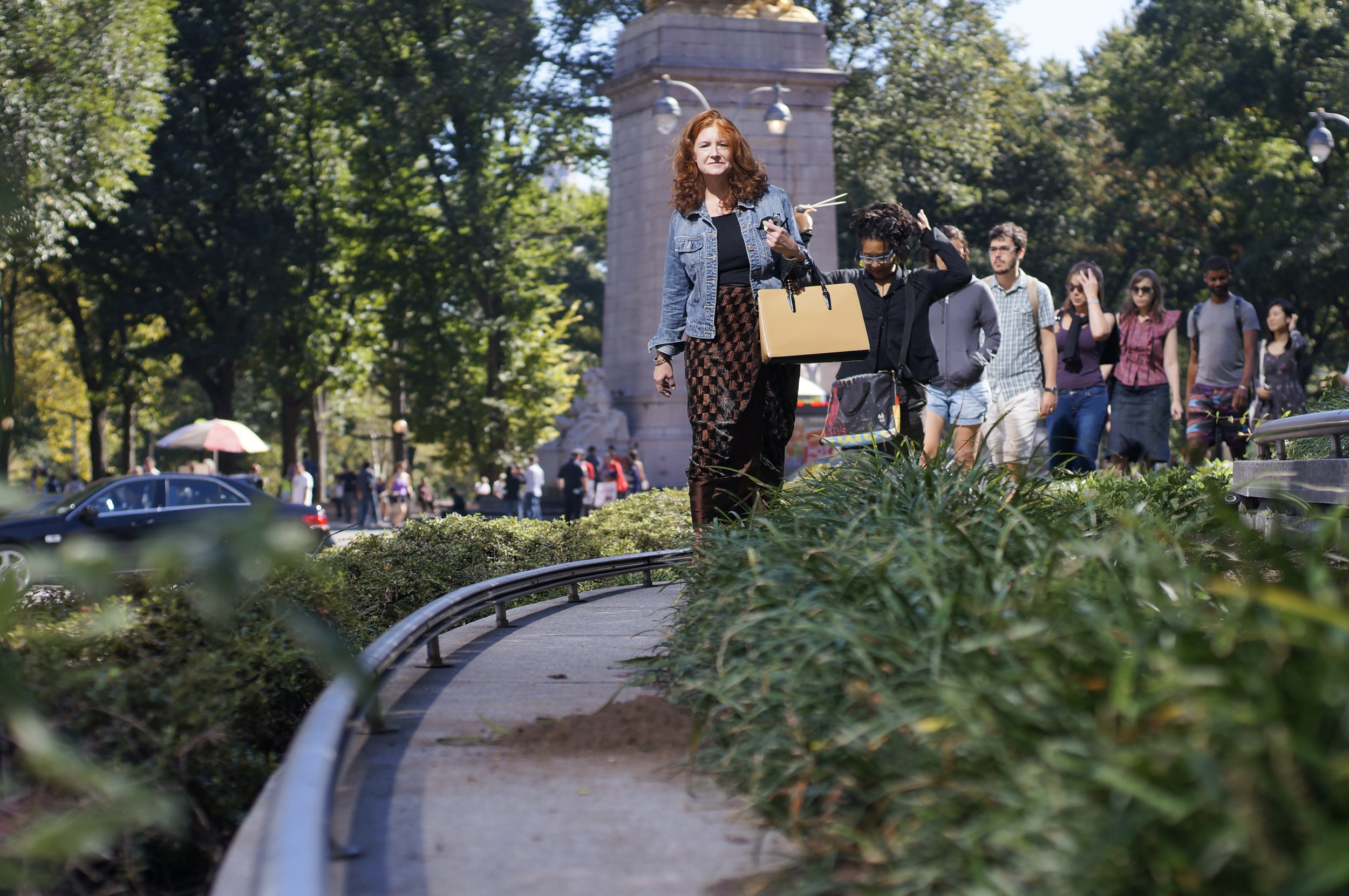Columbia University GSAPP
2014–15
Director, Events and Public Programs
Design by MTWTF
Design by MTWTF
Design by Common Name
Download the Fall 2014 events poster
Download the Spring 2015 events poster
Fall 2014 Events at Columbia University GSAPP
Originally published in CC:GSAPP, August 27, 2014
Scaffold, Billboard, Fountain, Sundial, Ledge. Taking cue from William H. Whyte's famed study of the plaza of the Seagram Building, the object-oriented 2014–15 Core Series of events at Columbia University GSAPP creates a new public space for conversation and exchange. Built with words in real time over the course of the year, speakers from five continents explore urgent questions at the intersection of design and law, science, social and economic justice, artistic practice, cultural theory, and more.
Incoming Dean Amale Andraos and Kazuyo Sejima discuss recent work by SANAA (“Canopy”); Naomi Klein, Kate Orff, and Laura Kurgan explore the political and practical challenges of planning for climate change (“Drain”); David Adjaye presents the soon-to-open affordable housing development, Sugar Hill, built for Broadway Housing Communities on Harlem’s West 155th Street (“Steps”); Astra Taylor, Andrew Blum, Leah Meisterlin, and Kazys Varnelis sift the high-stakes world of imagery and copyright online (“Kiosk”); Tatiana Bilbao and Frida Escobedo converse on design and construction in Mexico City today (“Seesaw”); São Paulo architect Angelo Bucci delivers the annual Kenneth Frampton Endowed Lecture (“Streetlight”); Angela Davis calls to repeal the militarization of everyday life (“Enclosures”); Karen Finley leads a participatory walk around Columbus Circle for Elastic City (“Mandala”); and Historic Preservation — the oldest program of its kind in the nation — celebrates 50 years at Columbia (“Monument”). Elsewhere, Studio-X Directors Mpho Matsipa, Selva Gürdoğan, and Nora Akawi assemble conversations on afro-futurism, experimental preservation, and a capstone conference co-organized with Dean Andraos on architecture, representation, and the “Arab City.”
Office workers sunbathing on ledges, “watchers” leering at passersby from stairs and standpipes, commuters fashioning ad hoc desks from trash can lids, tourists tying shoelaces on fire hydrants: Whyte and his team found that people use space in unexpected ways. Physical objects make public space habitable and facilitate civic exchanges and daily dramas, and those listed on the 2014–15 Core Series poster designed by MTWTF are the infrastructure and prompts for untold conversations to come. "What attracts people most" to a place, Whyte contends, "is other people."
